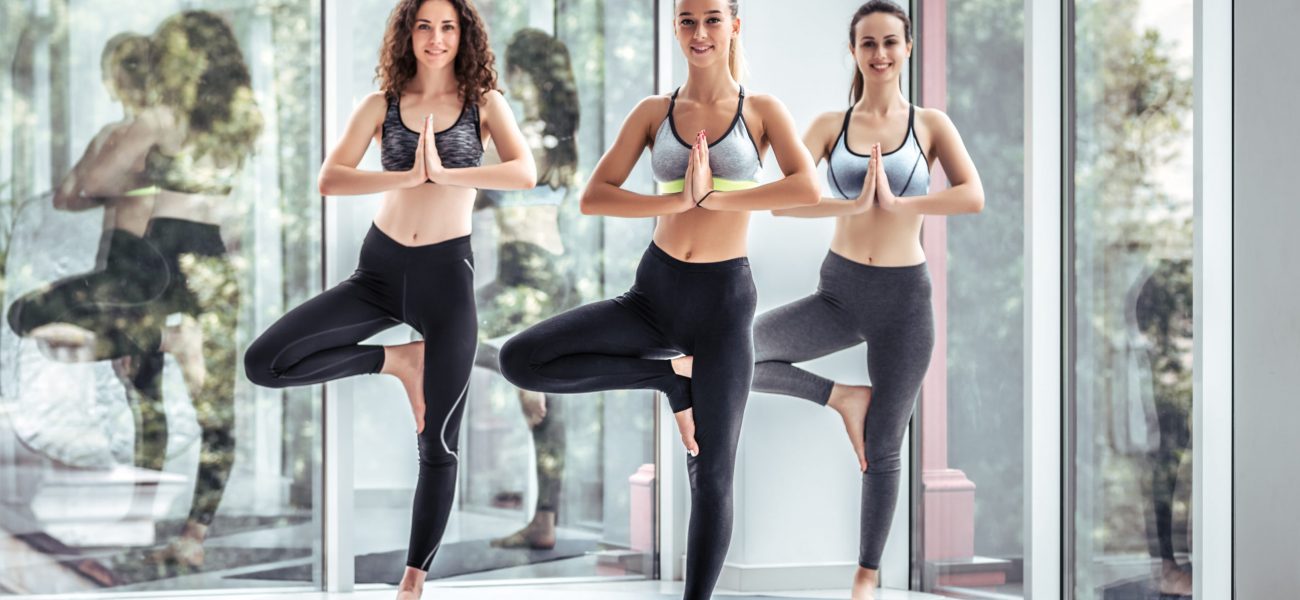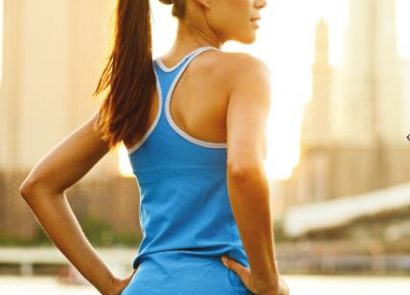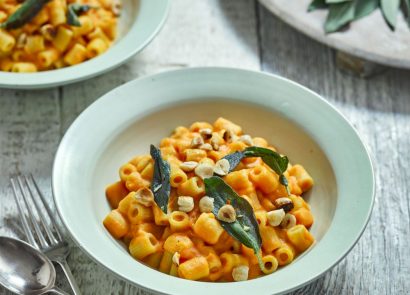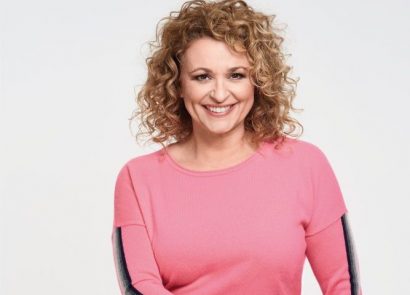Even though Pilates is the new kid on the fitness block in comparison to yoga, this workout is here to stay. As much as it is trendy, it’s not a fad and is something that people can benefit from their whole lives. It’s an intricate discipline, but ultimately a Pilates workout is a mind-body movement practice. Its main principles are body alignment, breath, core stability, control, balance, mobility and coordination, and it has a celeb following, including Kimberley Walsh and Abbey Clancy.
Joseph Pilates created the exercise in the 1920s as a type of physical therapy. Clinical Pilates helped to rehabilitate soldiers returning from the war. He went on to work mainly with ballet dancers, but was inspired by a range of fitness activities including gymnastics, yoga and boxing. Joe once said: “The first requisite of happiness is a healthy body.”
Freedom of movement really does equal happiness and, from a holistic point of view, ideally we want to be moving in a way that is kind to your body, functional and free of pain. Pilates is a type of fitness activity that allows us to move as efficiently as possible, as it connects your mind, body and spirit, and most people end a class feeling lighter, taller and calmer. It can also help you to a better posture. Not sure if Pilates is right for you? Take our quiz to find out.
What is Pilates?
Pilates movement focuses on stability and controlling your muscles so that you get better mobility (and strength too, of course). “Incorporating strength training, such as a Pilates workout, with cardio exercise provides a cross-training mix, which is lower impact and reduces inflammation and risk of injury,” says qualified nutritionist, Emma Scott. “At the same time, it helps improve posture and balance and boosts the flexibility and strength of the muscles, tendons, bones and ligaments.”
You may be wondering how similar Pilates is compared to a barre class. While barre also descends from ballet, there are certain differences between the two.
According to Physique57, during a barre workout, you’ll use your own body weight for resistance and focus on small, deliberate movements that focus on specific groups of muscles. Proper form, body alignment and posture is stressed, which in turn leads to an overall strengthening of core muscles and the appearance of an aligned, lean body. Aerobic exercise is also used in this method, as the idea is to increase cardiovascular endurance while increasing the body’s metabolism to burn fat. It can be quite intense, with classes lasting on average 60 minutes. Increased stamina is achieved by allowing very little rest between activities so muscles stay engaged.
Pilates benefits
There are endless benefits to this type of fitness – it works your deep intrinsic muscles like no other form of exercise, aids better posture, supporting your joints and spine to create a strong body that is less prone to injury and boosting your core strength. Regular practice leads to an improved range of movement, increased flexibility, better balance and coordination and muscle tone. It’s great for increasing your body awareness and proprioception, it creates a calmer mind, improved posture and the ability to use the full facility of your breath, as well as keeping you mobile and strong as you age. It can even alleviate menopause symptoms.
Three things Pilates is good for
Although yoga or Pilates practice can seem like a light form of physical activity, you’ll actually be strengthening your abdominal muscles and working on your balance.
Pilates helps you sleep
“The deep muscle relaxation experienced during this kind of exercise helps reduce anxiety, muscular tension, insomnia, depression, fatigue, muscle spasms, neck and back pain, and high blood pressure,” explains Gaby Noble, a leading instructor. “Pilates exercise will also trigger an increase in body temperature – enough to cause the post-exercise drop in temperature that helps promote falling asleep easier.” Spinal rolling techniques are particularly beneficial, as rolling and unrolling massages the spine and relaxes nerves – it’s the ultimate mind-body fix that will help you to switch off.
Pilates can aid weight loss
Although not as effective as cardio aerobic exercise, a Pilates workout can promote weight loss and help you burn calories when following a healthy diet and attending a regular Pilates class.
Pilates can be performed with or without equipment
There are plenty of YouTube workouts that you can do in the comfort of your own home or you could even invest in a Pilates DVD that will guide you through if you’re a beginner to practicing Pilates, although you may want to invest in a yoga mat for comfort. Pilates reformer is where you’ll find an instructor to teach you how to use the equipment.
Types of Pilates
There are so many types of Pilates aside from classical Pilates, such as zero gravity Pilates, Chili Pilates and the pregnancy Pilates method, but we think these should be on your radar to help get you the results you want. Some of these can be done from the comfort of your own home, while others will need the Pilates equipment and expertise from a Pilates teacher (here’s how to find one to suit you) that you can find at a Pilates studio.
Reformer Pilates
The reformer is made up of a horizontal moving bed attached to springs of different strengths, a stable platform and a moveable foot bar and straps, which you’ll use with your hands and feet to do a range of exercises. The resistance challenges your body stability and muscle strength and encourages a greater range of movement. You may have been one of the many who has searched for ‘Adele reformer Pilates’ after seeing her incredible weight loss pictures!
Tempo Pilates
Tempo Pilates is an intense, high-calorie Reformer workout, set to dance music with an upbeat tempo. It’s a fresh approach to Reformer Pilates, that’s fun, challenging and enjoyable.
Body control Pilates
Body control Pilates taps into the spiritual element of the exercise, as it aims to help you gain complete control of your body and mind. The different Pilates moves you might come across in this practice are a single leg stretch, the pelvic curl and the teaser, helping to strengthen your arms and legs.
Bootcamp Pilates
This revolutionary type has arrived fresh from the fitness studios in London that aims to provide an intense and effective workout targeting your core and upper body fitness level. If you want proof that this type of exercise really works, take a look at Lorna Jane Clarkson’s personal trainer!
Mat Pilates
In a mat Pilates class it’s usually just your body and your mat, but you may also use some other pieces of small equipment to do these mat exercises. You might be focusing on abdominal work, glute work, balance, upper body strength, unilateral work, spine mobility, extending your spine or a bit of everything during a mat class.
Classical mat Pilates
Classical mat Pilates is a series of exercises developed by Joseph Pilates which have a set pattern. A traditional mat session is very challenging and you’ll unlikely do a class which follows the exact flow from start to finish but a lot of teachers will include a selection of the exercises into the class.
Pilates VS yoga: which is best?
There are so many benefits for both a Pilates and a yoga class, so it really does depend on how you like to work out. One of the main differences though is that yoga focuses on improving the flexibility of your muscles and can help reduce stress, while Pilates relaxes the muscles which may be tight and aims to lengthen, helping you move deeper into the poses.
Three of the best YouTube workouts
When you’re just starting your journey, it can be a good idea to do some Pilates at home before you search for ‘Pilates near me’. We’ve rounded up the best Pilates YouTube workouts, suited to your ability and problem areas to add to your Pilates routine.
Pilates is more than just a good exercise – it’s also great when it comes to supporting your back. By targeting small muscles as well as big ones, it supports joints and helps to alleviate pain.
5 Minute Pilates Ab Workout for Core Strength
Getting started with Pilates at home
Before heading to your first class, try these gentle exercises so that you’re familiar with the basics.
Pilates breathing exercises
In Pilates, we breathe laterally to encourage relaxation, stability and to assist movement. Start by laying on your back with your knees bent and your feet hip width apart. Place your hands on the side of your lower ribs and feel long in your spine. Start to notice how you are breathing naturally. As you inhale the breath to fill up your hands, direct the breath into your ribcage filling up the back and sides. As you exhale feel the ribs narrowing and the chest softening. Avoid moving your shoulders and chest up and down and use the full capacity of your breath. Continue five to 10 rounds of breath like this.
Pillow squeeze
This exercise helps you learn how to correctly engage your deep abdominals and stabilise your spine. Lay in the same start position as above, on your back, and place a small cushion between your knees. Prepare your body by taking an inhale and as you exhale gently squeeze the pillow and feel your navel draw towards your spine. You should also feel a sense of lifting up your pelvic floor, as if you needed to stop yourself peeing. Inhale to release, exhale to squeeze. Repeat up to 10 times.
Knee folds
This exercise tests your pelvic and spine stability and that neutral pelvis we found in the exercise above. It is fundamental for many exercises in Pilates and one you may need to practise a lot. Once you have worked through the first three moves, inhale to prepare the body. As you exhale, fold the right knee towards you, moving from the hip joint, and inhale to place the foot back down. Repeat on the other side. It’s like a marching motion of your legs, but the key thing here is to keep the pelvis and spine neutral. Avoid any rocking of the pelvis and try to maintain a connection to your deep centring muscles throughout. Repeat three times on each leg.
Your first Pilates class
Taking on a new kind of fitness for the first time, no matter what it is, can be intimidating – let alone when you’re trying to squeeze and contort your body into various poses. Luckily, Annette Thomas, Pilates instructor is on hand to guide you through the need-to-know basics before your first class.
A balanced class will take you through a range of different exercises where your spine will move into flexion, extension, rotation and lateral flexion (side bending) and you’ll also do a range of exercises starting from laying on your back, side, front, seated, standing and kneeling.
You may also use some props like a Pilates ball, straps, bands, rings, hand weights and rollers to challenge your mat practice even more. Do not expect to be jumping up and down or even feeling the ‘burn’ in every class. Relax and make it your priority to simply educate yourself on your body and the practice.
Don’t wear loose clothing
“Even though it’s a more gentle form of exercise compared to high intensity or cardio workouts, don’t make the mistake of wearing clothing that is too baggy. Choose comfortable, but stretchy clothes so that your instructor can see the alignment of your body and symmetry during class. Some of the more challenging exercises can also be quite compromising – so if your clothing is too loose it could gape or get in the way of your moves!”
Leave your trainers behind
“A class is usually done barefoot so that your foot and ankle movement is unrestricted and your instructor can assess you have the right foot alignment and posture. So, the good news is that there’s no need to splash out on expensive trainers! However, if you’re reluctant to get your feet out on show, then you may want to invest in some Pilates socks for extra grip.”
Keep it simple
“Zips, buckles and buttons can be uncomfortable when you’re lying on your back and belts, jewellery and drawstrings can get dangerous if they are caught in the springs of the equipment and cause an injury – or simply be distracting when you’re using the Pilates machine. I’d recommend leaving all jewellery in a locker!”
Invest in a good quality mat
“Many gyms and studios provide equipment for the workout. However, many people do like to work out on their own mat and the mats are often thicker than to provide more cushioning and padding. You also might be surprised that the exercises can be relatively strenuous, and some people work up a sweat – so it can be useful to bring a towel.”
Don’t forget a hairband
“All exercises are founded on the principles of precise movement, control and correct muscle activation, so it’s important that you’re as focused as possible. If you have long hair, tie it back so it’s out of your face and you can concentrate on your moves!”



















